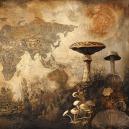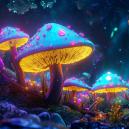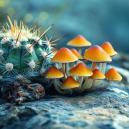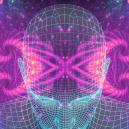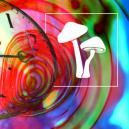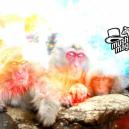How Does Psilocybin Work?
Published :
January 1st, 2023
Categories :
Research

Psilocybin is often described as a modern wonder drug. But what actually is it, and how does it work? Find out all about psilocybin, the psychoactive compound in magic mushrooms, here!
Most of us have heard of magic mushrooms; and as they gain popularity, many have also heard of psilocybin, the prodrug responsible for their profound hallucinogenic effects. But what actually is psilocybin?
Here we look into where psilocybin is found, how it interacts with the brain, what this looks like functionally, and finally, some of the medical conditions it's being researched in relation to.
WHAT IS PSILOCYBIN?
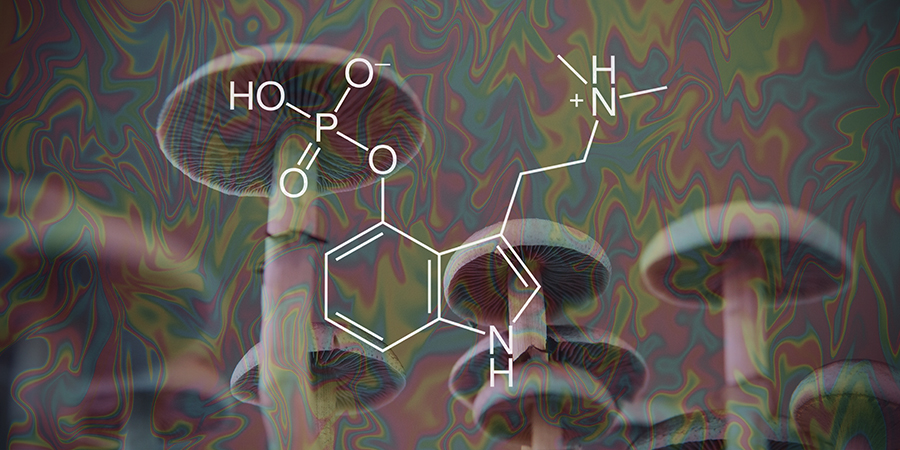
Psilocybin is the major psychoactive compound found in Psilocybe mushrooms. Often referred to as the active compound in psychedelic mushrooms, this is in fact only half of the truth. Psilocybin is actually a prodrug; that is, one that is metabolised in the body into a drug.
First isolated from Psilocybe mexicana in 1958 by Albert Hofmann, the compound behind the psychedelic effects of magic mushrooms was, until then, unknown. However, the use of magic mushrooms was alive and well in indigenous communities across the Americas, particularly Central and South America. Some claim that outside of these cultures its use had died out entirely until the mid-21st century. However, given how abundantly psilocybin mushrooms grow across the world, this is hard to believe.
While psilocybin contains everything necessary to cause a psychedelic experience, it must actually be converted into psilocin for it to interact with the central nervous system.
PSILOCIN VS PSILOCYBIN
So what’s the difference between psilocin and psilocybin? Fresh magic mushrooms contain both of these substances, but often in vastly different concentrations. Significantly more psilocybin tends to be found in most Psilocybe mushrooms, and the psilocin that is present tends to degrade quickly when exposed to oxygen. This can be seen in the blue bruising widely exhibited by psilocybin mushrooms.
Psilocybin, however, is more stable in fresh mushrooms. But as mentioned, only psilocin can interact with the brain and cause you to trip. Fortunately, psilocybin will convert into psilocin once exposed to highly acidic conditions, such as your stomach.
If you’ve ever heard of the lemon tek method, then this should shed some light on how it works. The acid in lemon converts the psilocybin into psilocin outside of the body, which is speculated to increase the speed at which effects take hold when inside the body. If consuming mushrooms without the presence of lemon juice, this process will be taken care of exclusively by stomach acids.
WHAT ARE PSILOCYBIN-CONTAINING MUSHROOMS?
Psilocybe mushrooms can be found on almost every continent on Earth—with the exception of Antarctica. With hundreds of different species, it’s a widespread genus that has a place in the history of pretty much every culture on the planet.
While there are hundreds, a few particular species are the most renowned. These are:
- Psilocybe semilanceata
- Psilocybe cubensis
- Psilocybe azurescens
- Psilocybe cyanescens
Outside of the world of fungi, it's difficult to find psilocybin elsewhere in nature—though it is thought there is a type of rare lichen that grows in South America that contains several psychedelic compounds, one of which is psilocybin.
HOW DOES PSILOCYBIN AFFECT THE BRAIN?
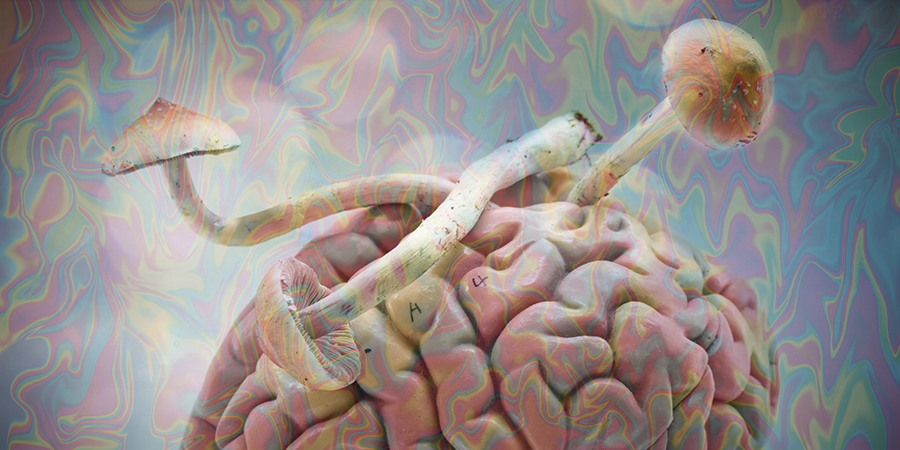
Psilocybin’s, or specifically psilocin’s, effects on the human brain are complex, not fully understood, and potentially even psychotomimetic—that is, they mimic psychosis (Vollenweider et al., 1997). Though far from being dangerous, this characteristic may be key to psilocybin's potential uses.
It is thought that the main way magic mushrooms affect the brain is via the serotonin 5-HT₂ₐ receptor. Psilocin also has a lesser affinity to other serotonin receptors, but it appears to produce its most profound psychological effects courtesy of this receptor.
PSILOCYBIN AND THE DEFAULT MODE NETWORK
But what actually happens in the brain when you take psilocybin mushrooms?
It's believed that the default mode network (DMN) holds the key. It has been discovered that, contrary to expectations, psilocin may exert its effects by actually decreasing, rather than increasing, brain activity (Carhart-Harris et al. 2012). To be more specific, it has been observed that activity in the DMN region of the brain appears to become significantly reduced in those participants given psilocybin as opposed to a placebo.
Why is this important? The DMN is thought to be the centre of self, where ingrained thought patterns and people’s sense of themselves exist. Functionally, its purpose is thought to be filtering incoming stimuli to stop them being overwhelming and chaotic, delivering them to your conscious mind in a manageable way.
By suppressing the activity of the DMN, psilocin appears to allow consciousness to spread into further regions of the brain, which is observable in the greater interconnectedness between disparate regions.
PSILOCYBIN AND CONSCIOUSNESS
Leading on from these observations, it has been suggested by researchers at the University of Sussex that psychedelic drugs actually heighten consciousness (Schartner, Barrett and Seth, 2017). They concluded this by observing brain signal diversity. Usually, this diversity increases with states of awareness. For instance, a waking brain shows higher brain signal diversity compared to a sleeping brain, and a sleeping brain more than a “vegetative brain”.
Brains under the influence of psychedelic drugs show a level of interconnectedness usually unseen, which led researchers to posit that consciousness is heightened under their influence. Exactly what this means, though, is yet unclear, and must be the subject of future research.
POTENTIAL MEDICAL USES OF PSILOCYBIN
Given these findings, and the many anecdotal reports of people feeling they’ve been positively affected by hallucinogenic drugs, there's a lot of interest in what effects psilocybin may have on mental well-being, brain damage, and mental illness.
While research is proving promising, it’s important to recognise that, due to overly restrictive laws surrounding psychedelics research, there is still a long way to go until we fully understand this compound and its effects on the mind.
PSILOCYBIN FOR TREATING DEPRESSION
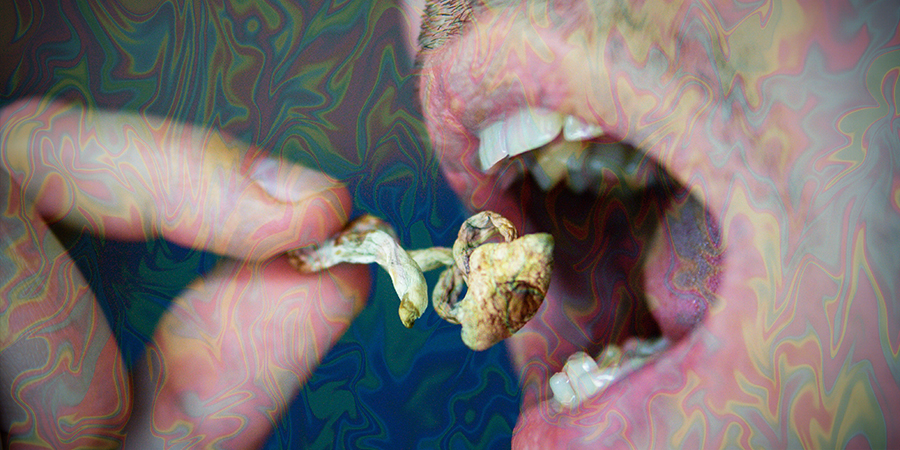
There’s a wealth of studies investigating psilocybin's effect on depression.
A study by Carhart-Harris et al. (2017) gave 19 treatment-resistant participants with depression psilocybin, along with psychological support. One week after the treatment, all 19 participants reported significant changes in their depressive states. Not only this, but it was observed in 16 that cerebral blood flow to the amygdala and activity in the DMN were reduced. After five weeks, 47% of the participants still exhibited these changes. The researchers concluded that psilocybin may act as a “therapeutic reset”.
Furthermore, Hendricks et al. (2015) investigated the depressive and suicidal thoughts of participants who have used psilocybin for much of their life, have used psilocybin and other psychedelics, have not used psilocybin but have used other psychedelics, or have never used any psychedelics.
They found that the participants who fell into the first category fared the best, and those who fell into the final category fared the worst. They concluded that these findings indicate that psilocybin has significant effects on the occurrence of suicidal and depressive thoughts. However, they were also careful to note that the chemical was likely to only play a role in these observations, rather than being the sole cause.
PSILOCYBIN FOR PTSD
In 2020, Krediet et al. (2020) investigated the role that psychedelic drugs might play in treating post-traumatic stress disorder (PTSD). Alongside investigating psilocybin, they also looked into ketamine, MDMA, and LSD.
Currently, the first line of treatment for PTSD is psychotherapy, as there are few existing drug treatments that show much efficacy. Due to the nature of the drugs studied, the team found that each had a unique role to play as an adjunct to existing therapies, rather than as a replacement. The exact mechanisms by which this occurs were not identified in this study, highlighting the need for further research.
A review by Reiff et al. (2020) looked into many clinical trials surrounding MDMA and psilocybin for a number of psychiatric disorders, including PTSD. As these drugs have now been classified as potential “breakthrough therapies” by the FDA, the researchers used the growing database of studies to assess their efficacy. Overall, they found results were significant and led in a similar direction—and showed a surprising breadth of application. Once again, though, these studies specifically looked into psychedelic drugs used in conjunction with psychotherapy, rather than in isolation.
A further review by Vermetten et al. (2020) also identified a potentially significant relationship between psilocybin and therapy in relation to PTSD. However, it also noted that these varied results were yet to be verified in controlled studies using placebo groups. Until these studies take place, we are unable to identify exactly how effective psilocybin may or may not be in the treatment of PTSD.
PSILOCYBIN FOR NEUROGENESIS
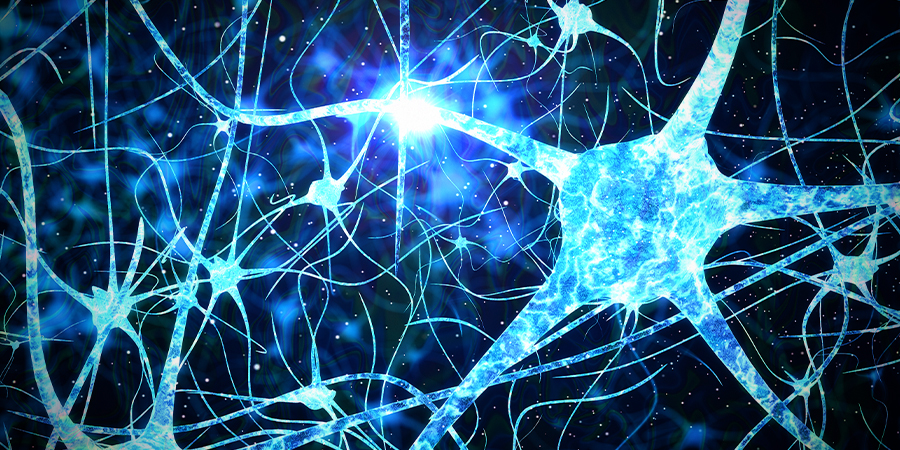
Catlow et al. (2020) identified psilocybin’s potential to promote neurogenesis in murine studies. What they discovered was that ingrained fear responses were able to be undone with the application of the chemical, implying that it may be able to assist in rewriting neural pathways.
This mechanism is particularly poorly understood compared to others. While it is broadly agreed that psilocybin does encourage neurogenesis, the applications of this are still unknown. However, looking at the previous studies, it's highly possible that encouraging new pathways may at least, in part, explain their findings.
For instance, in relation to psilocybin and addiction, it has been observed that participants may be able to better manage lifelong addictions, changing decades-old neural pathways (de Veen, Schellekens, Verheij and Homberg, 2017).
IS PSILOCYBIN SAFE?
One of the reasons psilocybin mushrooms show so much promise is their exceptional safety profile. With almost no observable toxicity and few adverse effects, the chemical appears to pose little in the way of risk.
Despite this hallucinogenic drug's archaic reputation for causing suicidal trips and psychosis, beside a few anomalous cases, it’s actually responsible for very few deaths or hospitalisations. For instance, in 2018, 518 people in England and Wales alone died from drug poisoning from antidepressants (Statista). In comparison, in the same year, only 0.2% of 12,000 respondents who’d taken magic mushrooms sought emergency medical help, with 0 deaths that year (Global Drug Survey, 2018).
These findings led the researchers behind the Global Drug Survey to classify psilocybin as the safest recreational drug. Much safer, in fact, than many legal drugs.
A LONG WAY TO GO
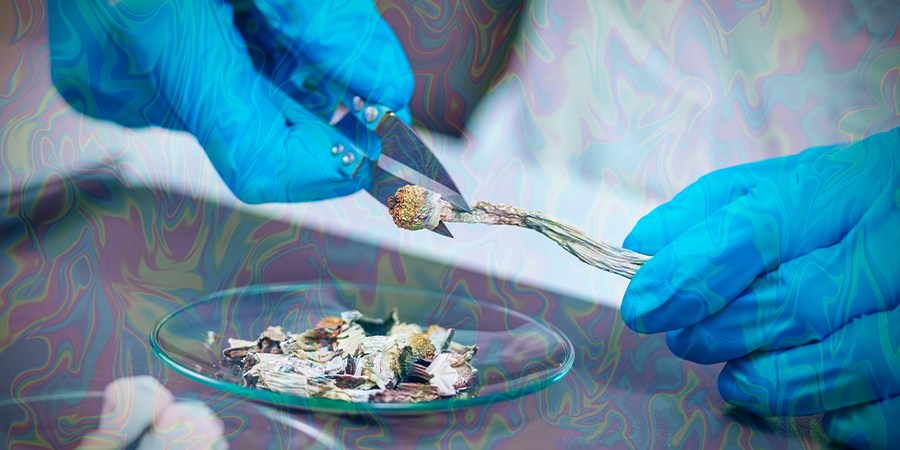
Research into psilocybin and psilocin is promising, and we’re gaining an ever clearer understanding of how these chemicals work. Not only this, but we’re beginning to understand how we might be able to apply these findings in a therapeutic setting.
That being said, there’s still a lot more to discover. Fortunately, with psilocybin's superb safety profile, and the wealth of anecdotal and statistical information available, each of us is in a position where we are able to experiment cautiously and optimistically in an informed way.
With luck, we will soon know much more about this magical compound.





